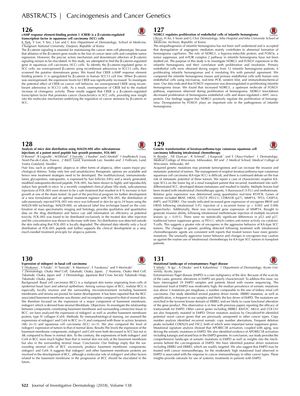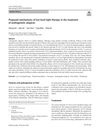Mutational Landscape of Extramammary Paget Disease
April 2018
in “
Journal of Investigative Dermatology
”

TLDR The document concludes that ERBB2 mutations are common in extramammary Paget disease and may respond to systemic treatments like cancer immunotherapy.
The document presents findings from various studies on skin conditions and potential treatments. One study focused on the role of CREB, a transcription factor regulated by ß-catenin, in promoting cancer characteristics in squamous cell carcinoma (SCC) cells. Another study reported on a novel peptide, FOL-005, which induced hair growth in mice and showed promise as a safe treatment for alopecia in a clinical phase I/IIa study, with an 8% increase in hair growth at one tested dose. The distribution of FOL-005 was found to be localized to the skin, with no evidence of systemic distribution. Additionally, the document includes a study on the expression of nidogen1 in basal cell carcinoma (BCC), suggesting that nidogen1 and other basement membrane proteins may play a role in BCC development. Another study investigated the role of NDRG1 in the proliferation of infantile hemangioma, suggesting that dysregulation by FOXO1 is important in the pathogenesis of this condition. A case of eruptive keratoacanthoma-type cutaneous squamous cell carcinoma (KA-type SCC) in a renal transplant patient was also discussed, highlighting the potential risks of intralesional chemotherapy in transplant patients due to changes in oncogene expression. Lastly, the document summarizes a study on the mutational landscape of extramammary Paget disease (EMPD), identifying ERBB2 mutation and amplification as frequent and likely key drivers of EMPD, along with other mutated cancer genes. The study suggests that EMPD may respond to systemic treatments, including cancer immunotherapy, due to its moderately high mutational load.




